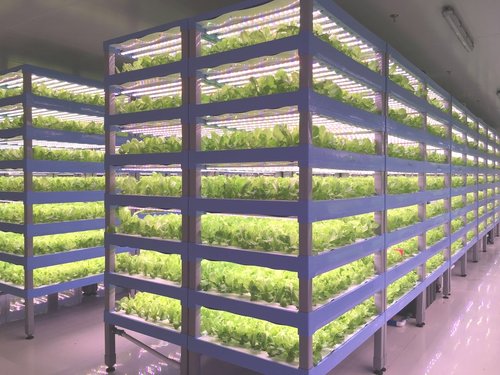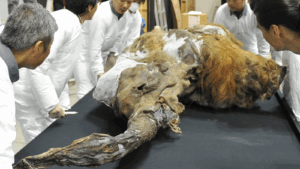The hidden problems of the current food Industry and a system for the future
“Food is symbolic of love when words are inadequate” -Alan D Wolfelt.
Whether it’s the smell of your grandma’s freshly baked pies, or funny stories told around the Thanksgiving table, food brings us together. It breaks boundaries and reaches hearts. Fortunately, the urbanization of our society has allowed for a very profitable, and wide-reaching food industry to develop. Currently, our global production system generates 3.9 billion tons of food each year.
However, this is only part of the story. This large-scale production comes at an enormous hidden cost. From contributing to global warming to destroying families, a lot of history lurks behind the beautifully filled shelves of your local supermarket.

What is the root of this problem?
For decades, our global population has increased at an exponential rate, creating a skyrocketing demand for food. To feed our projected population of 10 billion by 2050, we need to increase our food production by about 70 percent and generate the same amount of food in 40 years that we have created in the past 8000 years (8). As a result, large and profitable food industries have increased their rates of production in order to stay relevant and meet market demand.
The Farming Industry
In the agricultural industry, more fertilizers directly correlate with greater production. As a result of their excessive use, non-renewable resources such as soil, air and surrounding water become contaminated. Furthermore, as more land is cleared to create more space for production, we trigger a surge in both deforestation and loss of biodiversity.
However, we are not slowing down. Recently, the focus of farming has evolved from that of generating food to creating resources for other production cycles, especially the oil and fashion industry. A great example of this is the production of corn: 40 percent of it goes to bioethanol, an ingredient used to fuel cars (9). By contributing viable food in other parts of our lives, we place more strain on our already lacking global food supply.
The Meat Industry
Globally, we consume around 386 million tons of meat each year, which would fill a series of back-to-back garbage trucks circling the diameter of earth four and a half times. In order to produce this much meat per year, 60 percent of the world agricultural land is directed to raising around 1.5 billion cattle, 23 billion chickens, 1 billion pigs, and sheep each year (11). Though many of these animals naturally eat grass, corporate companies have switched to grain or cereal alternatives because there isn’t enough space or grassland to feed them, increasing the number of natural resources wasted.
To build on this, cows release methane gas, a damaging greenhouse gas 23 times stronger than carbon dioxide, through burping and flatulence. With a constantly growing population of cows, the amount of methane they release damages the earth as much as 22 million cars would. This puts the meat and dairy industry in the running to become the biggest contributor to climate change, outdoing the fossil fuel industry, by 2050.
The Oil Industry
Whenever we think of oil, our mind usually goes to the fuels that power our cars, planes, and boats. Though all these types of oil are extremely damaging, we tend to overlook the oil which is found in almost every supermarket product: vegetable and palm oil. Huge forests of third world countries are deliberately set on fire by oil companies to make space for the palm oil plantations (5).
In Indonesia fires repeatedly cause local citizens to fight for their lives, houses, and land; in one attack in 2017 alone, 9000 people died as a result of wounds or poor air conditions (5). During the past decade, Indonesia has lost 16 percent of its tree coverings, endangering the biodiversity of habitats that house 10 percent of the world’s wildlife. The smoke released as a result of these forest fires has added years worth of carbon dioxide (CO2) emissions. All this for the same bottles of oil that sit in each of our local grocery stores.
So, how can our society move towards more sustainable alternatives?
Thankfully, modern technology has enabled us to experiment and employ key innovations that can drastically improve the way we produce our food.
Farming Various technology companies are exploring sustainable and efficient farming methods. Environment Agriculture, also called indoor vertical farming, is one of them. This type of farming is weather-controlled where plants are planted in a rack system to preserve space that is used to grow resources. This is a relatively new farming system that substitutes aspects of conventional farming with artificial ones. For example, the technology trades sunlight for LED lights and soil with biodegradable peat moss. This method saves up to 90 percent of the water, fertilizer, and land that traditional farming methods use (1). Furthermore, this method is extremely predictable and allows us to consistently produce up to 30,000 veggies each day (1). The great news is that this type of farming could be installed anywhere, including abandoned buildings in urban areas. One drawback to this method is the high usage of energy; however, this technology is becoming more energy-efficient as it develops.

Change in Diet
Though corporations cause the majority of food-sustainability problems, shifting our personal attitude towards food consumption still has a profound impact.
First, start with eating less meat. If we can lower this demand, we will indirectly slow down the depletion of resources and creation of CO2. Studies have shown that if Americans eat two fewer beef hamburgers than the average of three per week, the climate impact would be equivalent to removing their car from the road for 350 miles, or around 300 pounds of CO2. An alternative to quitting meat is consuming products such as The Impossible Burger or The Beyond burger which replicate the taste of meat using plant-based products such as pea protein consulates and soy respectively. 6
Another drastic change in diet could be adding insects to it. I know, insects sound disgusting! But in fact, more than two million people across the globe have used and continue to use insects in their meals (7). Studies show that more than 4000 insects provide significant nutrition (7). Surprisingly, they are environmentally friendly to produce and nutritious, composed of 80 percent protein and containing the same amount of iron per serving as beef (7). Growing companies such as Goffards Sisters and BioHexaPro are finding innovative ways to incorporate them into our meals such as using insect powder or flour.
Conclusion
Advances in food-production technology have allowed us to live longer, healthier, and easier lives. However, increases in efficiency have come at the cost of our biosphere and future. In the next decades, we are expected to see our population consistently grow, and if we continue to produce food in the same ways, we will not be able to support our planet. It is our responsibility to push for these technologies and change our own routines to support our future. So the next time you pick out vegetables at your local supermarket or look at a hamburger in your school cafe, think of where they came from and set an example. Little by little, we can create change.
– Andri Kadaifciu
References
- Are Indoor Vertical Farms The Future Of Agriculture? | Stuart Oda. 2020. Video. TED.
- What Is Organic Farming? | Agriculture | Biology | Fuseschool. 2020. Video. FuseSchool – Global Education.
- The Future Of Farming. 2020. Video. The Daily Conversation.
- “Feeding 9 Billion – National Geographic”. 2020. Feeding 9 Billion – National Geographic. https://www.nationalgeographic.com/foodfeatures/feeding-9-billion/.
- Schlanger, Zoë. 2020. “The Global Demand For Palm Oil Is Driving The Fires In Indonesia”. Quartz. https://qz.com/1711172/the-global-demand-for-palm-oil-is-driving-the-fires-in-indonesia/#:~:text=Trucks%20carry%20palm%20oil%20fruit,to%20burn%20out%20of%20control.
- Capritto, Amanda. 2020. “Impossible Burger Vs. Beyond Meat Burger: Taste, Ingredients And Availability, Compared”. CNET. https://www.cnet.com/health/beyond-meat-vs-impossible-burger-whats-the-difference/#:~:text=The%20Beyond%20Burger%20is%20strictly,minerals%20than%20the%20Beyond%20Burger.
- Should We Eat Bugs? – Emma Bryce. 2020. Video. TED-ed
- ““Humanity Must Produce More Food In The Next Four Decades Than We Have In The Last 8,000 Years” – The Dutch May Have The Solutions – Richard Van Hooijdonk Blog”. 2020. Richard Van Hooijdonk Blog. https://www.richardvanhooijdonk.com/blog/en/humanity-must-produce-more-food-in-the-next-four-decades-than-we-have-in-the-last-8000-years-the-dutch-may-have-the-solutions/.
- The Hidden Costs of Turning Food Into Fuel | National Geographic. 2020. Video. National Geographic.
- Why Meat Is The Best Worst Thing In The World. 2020. Video. Kurzgesagt – In a Nutshell.
- “Meat And Animal Feed”. 2020. Globalagriculture.Org. https://www.globalagriculture.org/report-topics/meat-and-animal-feed.html.
Images
- https://scx1.b-cdn.net/csz/news/800/2018/2-supermarket.jpg
- https://images.squarespace-cdn.com/content/v1/5c473c3b3e2d09bdff26a349/1548798471504-9CILCZ0XC4P898GMFU7V/ke17ZwdGBToddI8pDm48kFr-MCz83LG2ZqzGFu9uALUUqsxRUqqbr1mOJYKfIPR7LoDQ9mXPOjoJoqy81S2I8N_N4V1vUb5AoIIIbLZhVYxCRW4BPu10St3TBAUQYVKcf42APUzg73I6BbvkUSZBpJhcOgRzHbaVuNgQSOKA8C5AwPhW16geOHSxinwWbjVI/Vertical+Farm+Design.jpg?format=500w






Comments are closed.